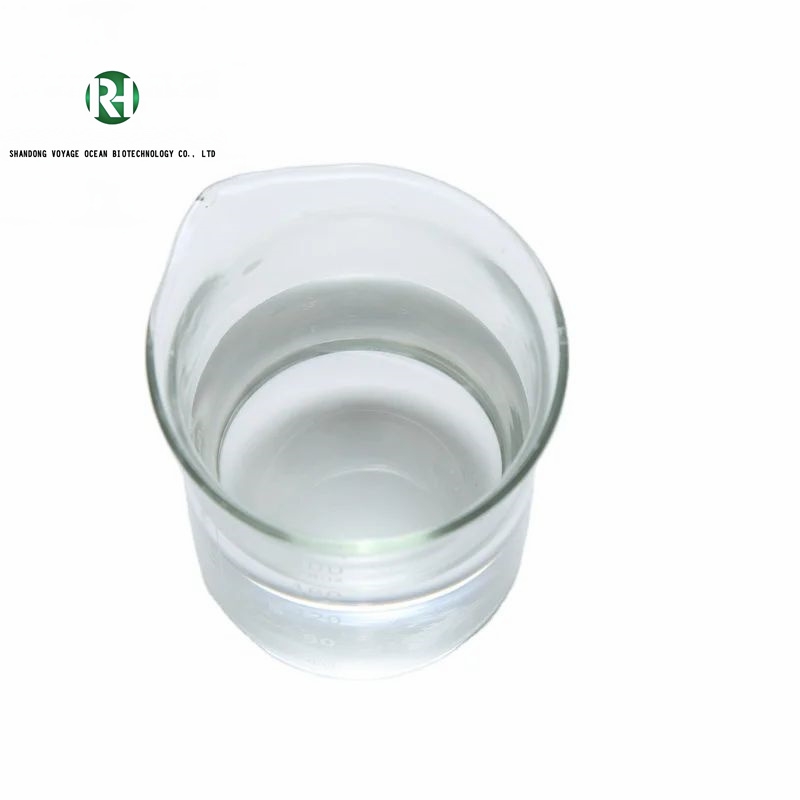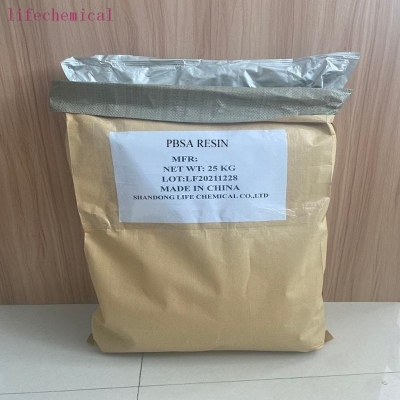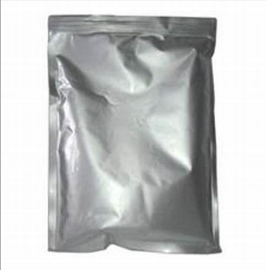-
Categories
-
Pharmaceutical Intermediates
-
Active Pharmaceutical Ingredients
-
Food Additives
- Industrial Coatings
- Agrochemicals
- Dyes and Pigments
- Surfactant
- Flavors and Fragrances
- Chemical Reagents
- Catalyst and Auxiliary
- Natural Products
- Inorganic Chemistry
-
Organic Chemistry
-
Biochemical Engineering
- Analytical Chemistry
-
Cosmetic Ingredient
- Water Treatment Chemical
-
Pharmaceutical Intermediates
Promotion
ECHEMI Mall
Wholesale
Weekly Price
Exhibition
News
-
Trade Service
China is the world’s largest producer of yellow phosphorus, and its output accounts for 80% of the world’s total yellow phosphorus production.
The CO content in the tail gas produced by yellow phosphorus is 85%-95%, which is one of the most difficult to purify complex toxic and harmful industrial waste gas.
It has troubled the world's yellow phosphorus industry for more than 100 years
.
The yellow phosphorus tail gas catalytic purification technology and application project jointly completed by Kunming University of Science and Technology, Yunnan Nationalities University, Sichuan Chuantou Chemical Industry Group Co.
, Ltd.
and Hubei Huashuo Technology Co.
, Ltd.
successfully solved this problem and won Won the second prize of the 2014 National Technology Invention Award
.
Ning Ping, a professor at Kunming University of Science and Technology who mainly completed the project, introduced that the characteristics of the production process of yellow phosphorus determine that there are reducing impurities in the tail gas, which cannot meet the conditions of high temperature and oxygen enrichment required by conventional catalytic oxidation reactions
.
The project pioneered multi-impurity low-temperature and micro-oxygen simultaneous catalytic oxidation technology in a strong reducing atmosphere, microwave activation regeneration of catalysts, and phosphorus and sulfur segmented recovery solvent regeneration technology, and realized multi-form phosphorus, sulfur, arsenic, and cyanide in strong reducing exhaust gas.
The deep oxidation and purification of other impurities makes it possible to efficiently utilize CO, phosphorus and sulfur in the yellow phosphorus tail gas
.
On this basis, the project team invented organic sulfur and cyanide catalytic hydrolysis-oxidation synergistic deep purification technology, and developed two new dry deep purification technologies to achieve the fine removal of two types of difficult-to-oxidize impurities coexisting in exhaust gas, namely organic sulfur and HCN In order to obtain high-quality CO feed gas
.
? The project also invented a multi-effect alkali absorption-liquid-phase catalytic oxidation coupled purification technology that combines the advantages of traditional water washing + alkaline washing, chemical precipitation separation and liquid phase catalytic oxidation
.
This technology can couple alkali absorption and liquid phase catalytic oxidation in the same reactor.
The liquid phase catalytic oxidation system is composed of basic components, oxygen-carrying active components, and catalytic oxidation active components
.
Through the three purification mechanisms of alkali absorption and neutralization, chemical precipitation, and liquid-phase catalytic oxidation, multiple purification effects such as conversion of elemental phosphorus into PH3, reduction of high concentrations of phosphorus, thiocyanate, fluoride absorption and separation, and recovery of sulfur resources are created for dry purification.
condition
.
? In order to realize the industrial application of the project results as soon as possible, the project team has also developed six series of new catalytic materials and ten types of special equipment for the catalytic purification of yellow phosphorus tail gas, and established a variety of complex toxic and harmful industrial waste gas deep purification process design software packages, which can be used for Various industries provide complete solutions from engineering design and construction, key materials and equipment to technical services, laying the foundation for the industrial promotion of project results
.
? Among the six series of new catalytic materials, the low-temperature thiocyanogen simultaneous catalytic hydrolysis catalyst can hydrolyze organic sulfur and HCN into H2S and NH3 at a lower temperature (150℃~200℃); ammonia selective oxidation catalyst and low normal temperature The conversion and absorption type thiocyanate fine remover can meet the high requirements of special product gas for NH3 and organic sulfur and cyanide purification, and realize the high-precision removal of trace sulfur, cyanide and ammonia; in addition, there are low-temperature micro-oxygen simultaneous catalytic oxidation catalysts, Organic sulfur cyanide catalytic hydrolysis-oxidation integrated catalyst and multi-effect alkali absorption-liquid phase catalytic oxidation catalyst
.
? Ten types of special equipment include: yellow phosphorus tail gas fixed-bed catalytic reactor, liquid phase catalytic reaction tower, yellow phosphorus tail gas gas boiler, yellow phosphorus tail gas safe combustion and exhaust system, catalyst and carrier production equipment, catalyst regeneration device, special yellow phosphorus tail gas Analysis equipment, yellow phosphorus tail gas gas-fired power generation device, corrosion-resistant heat exchanger, yellow phosphorus tail gas corrosion resistance experimental device
.
? In 2011, the project passed expert appraisal
.
The appraisal committee believes that the project has made major breakthroughs in key technologies for the purification of yellow phosphorus tail gas, and has generally reached the international advanced level.
Among them, the fixed-bed catalytic oxidation purification, catalytic hydrolysis purification, and liquid phase catalytic oxidation purification technologies of yellow phosphorus tail gas have reached the international leading level
.
? At that time, the technology had three competitive advantages in the market: First, leading economic indicators, with complete independent intellectual property rights
.
The purification index of multi-form phosphorus, sulfur, arsenic, cyanide, and fluorine in yellow phosphorus tail gas is less than 0.
1 mg/m3, and the cost of purifying yellow phosphorus tail gas using this project technology is about 0.
15 yuan/m3
.
The project results have complete independent intellectual property rights, and its related patents account for 44% of similar patents in the country.
Second, the technology is mature and the market share is high
.
The third is to be recognized and recommended by the national authority
.
The Ministry of Industry and Information Technology, the Ministry of Science and Technology, and the China Environmental Protection Industry Association use it as a recommended application for cleaner production technology, a project of benefiting people, and a national key environmental protection practical technology
.
? From the perspective of the promotion and application and the economic, environmental and social benefits obtained, the project has explored a new technical route to promote pollution control through the utilization of resources, solved the problem of purification of the world’s yellow phosphorus tail gas, and changed China’s exposure to the world’s yellow phosphorus.
The lack of original contribution in production technology has also established China's technological leadership in the world's yellow phosphorus industry
.
The CO content in the tail gas produced by yellow phosphorus is 85%-95%, which is one of the most difficult to purify complex toxic and harmful industrial waste gas.
It has troubled the world's yellow phosphorus industry for more than 100 years
.
The yellow phosphorus tail gas catalytic purification technology and application project jointly completed by Kunming University of Science and Technology, Yunnan Nationalities University, Sichuan Chuantou Chemical Industry Group Co.
, Ltd.
and Hubei Huashuo Technology Co.
, Ltd.
successfully solved this problem and won Won the second prize of the 2014 National Technology Invention Award
.
Ning Ping, a professor at Kunming University of Science and Technology who mainly completed the project, introduced that the characteristics of the production process of yellow phosphorus determine that there are reducing impurities in the tail gas, which cannot meet the conditions of high temperature and oxygen enrichment required by conventional catalytic oxidation reactions
.
The project pioneered multi-impurity low-temperature and micro-oxygen simultaneous catalytic oxidation technology in a strong reducing atmosphere, microwave activation regeneration of catalysts, and phosphorus and sulfur segmented recovery solvent regeneration technology, and realized multi-form phosphorus, sulfur, arsenic, and cyanide in strong reducing exhaust gas.
The deep oxidation and purification of other impurities makes it possible to efficiently utilize CO, phosphorus and sulfur in the yellow phosphorus tail gas
.
On this basis, the project team invented organic sulfur and cyanide catalytic hydrolysis-oxidation synergistic deep purification technology, and developed two new dry deep purification technologies to achieve the fine removal of two types of difficult-to-oxidize impurities coexisting in exhaust gas, namely organic sulfur and HCN In order to obtain high-quality CO feed gas
.
? The project also invented a multi-effect alkali absorption-liquid-phase catalytic oxidation coupled purification technology that combines the advantages of traditional water washing + alkaline washing, chemical precipitation separation and liquid phase catalytic oxidation
.
This technology can couple alkali absorption and liquid phase catalytic oxidation in the same reactor.
The liquid phase catalytic oxidation system is composed of basic components, oxygen-carrying active components, and catalytic oxidation active components
.
Through the three purification mechanisms of alkali absorption and neutralization, chemical precipitation, and liquid-phase catalytic oxidation, multiple purification effects such as conversion of elemental phosphorus into PH3, reduction of high concentrations of phosphorus, thiocyanate, fluoride absorption and separation, and recovery of sulfur resources are created for dry purification.
condition
.
? In order to realize the industrial application of the project results as soon as possible, the project team has also developed six series of new catalytic materials and ten types of special equipment for the catalytic purification of yellow phosphorus tail gas, and established a variety of complex toxic and harmful industrial waste gas deep purification process design software packages, which can be used for Various industries provide complete solutions from engineering design and construction, key materials and equipment to technical services, laying the foundation for the industrial promotion of project results
.
? Among the six series of new catalytic materials, the low-temperature thiocyanogen simultaneous catalytic hydrolysis catalyst can hydrolyze organic sulfur and HCN into H2S and NH3 at a lower temperature (150℃~200℃); ammonia selective oxidation catalyst and low normal temperature The conversion and absorption type thiocyanate fine remover can meet the high requirements of special product gas for NH3 and organic sulfur and cyanide purification, and realize the high-precision removal of trace sulfur, cyanide and ammonia; in addition, there are low-temperature micro-oxygen simultaneous catalytic oxidation catalysts, Organic sulfur cyanide catalytic hydrolysis-oxidation integrated catalyst and multi-effect alkali absorption-liquid phase catalytic oxidation catalyst
.
? Ten types of special equipment include: yellow phosphorus tail gas fixed-bed catalytic reactor, liquid phase catalytic reaction tower, yellow phosphorus tail gas gas boiler, yellow phosphorus tail gas safe combustion and exhaust system, catalyst and carrier production equipment, catalyst regeneration device, special yellow phosphorus tail gas Analysis equipment, yellow phosphorus tail gas gas-fired power generation device, corrosion-resistant heat exchanger, yellow phosphorus tail gas corrosion resistance experimental device
.
? In 2011, the project passed expert appraisal
.
The appraisal committee believes that the project has made major breakthroughs in key technologies for the purification of yellow phosphorus tail gas, and has generally reached the international advanced level.
Among them, the fixed-bed catalytic oxidation purification, catalytic hydrolysis purification, and liquid phase catalytic oxidation purification technologies of yellow phosphorus tail gas have reached the international leading level
.
? At that time, the technology had three competitive advantages in the market: First, leading economic indicators, with complete independent intellectual property rights
.
The purification index of multi-form phosphorus, sulfur, arsenic, cyanide, and fluorine in yellow phosphorus tail gas is less than 0.
1 mg/m3, and the cost of purifying yellow phosphorus tail gas using this project technology is about 0.
15 yuan/m3
.
The project results have complete independent intellectual property rights, and its related patents account for 44% of similar patents in the country.
Second, the technology is mature and the market share is high
.
The third is to be recognized and recommended by the national authority
.
The Ministry of Industry and Information Technology, the Ministry of Science and Technology, and the China Environmental Protection Industry Association use it as a recommended application for cleaner production technology, a project of benefiting people, and a national key environmental protection practical technology
.
? From the perspective of the promotion and application and the economic, environmental and social benefits obtained, the project has explored a new technical route to promote pollution control through the utilization of resources, solved the problem of purification of the world’s yellow phosphorus tail gas, and changed China’s exposure to the world’s yellow phosphorus.
The lack of original contribution in production technology has also established China's technological leadership in the world's yellow phosphorus industry
.







